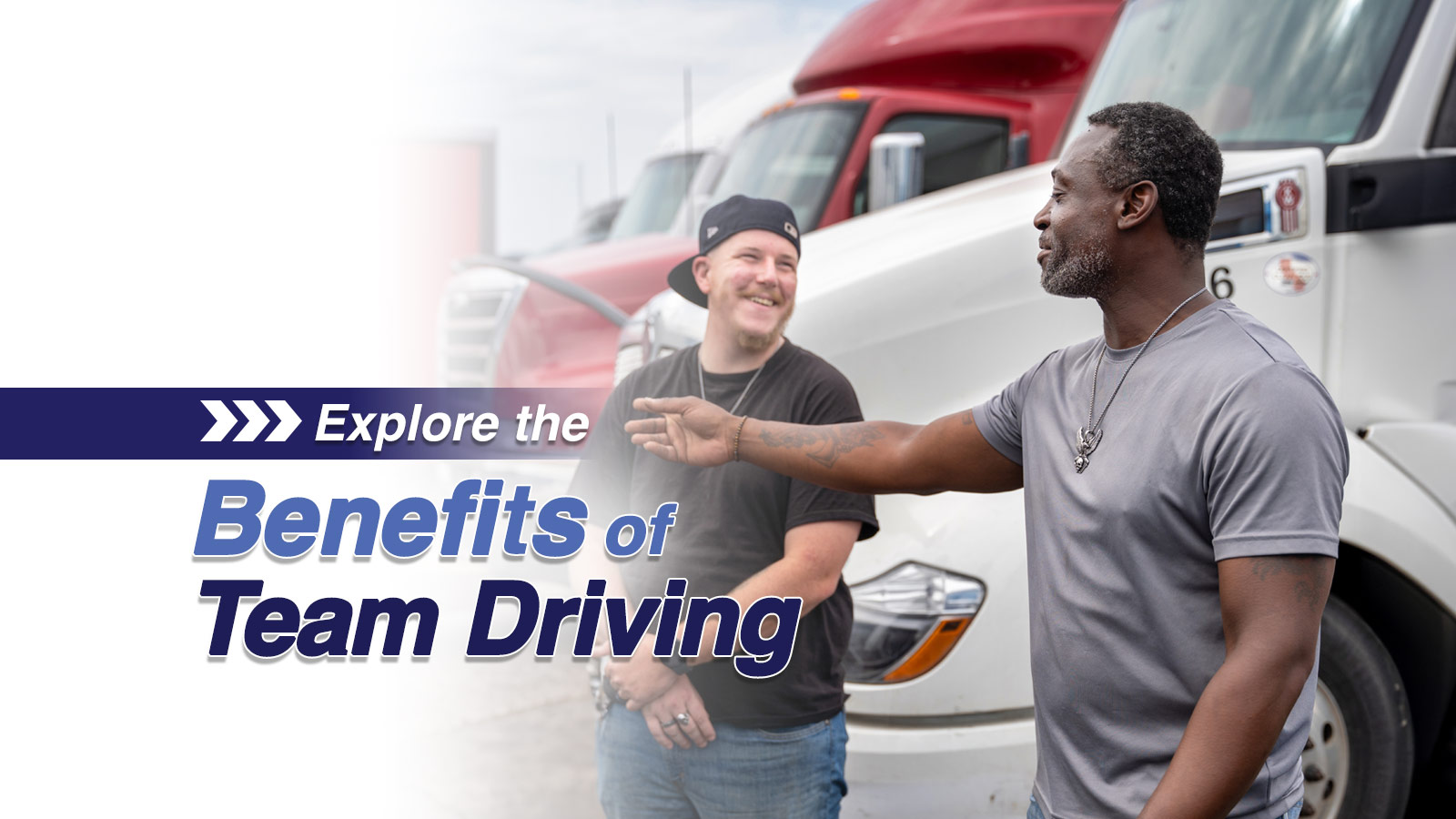Team driving allows two CDL-A drivers to work together, get the most out of their shifts, and earn more money. Many drivers love their teammates and advise everyone to get into team driving. On the other hand, some drivers can’t even imagine sharing their living and working space with another person. We explored what drivers say about team driving, so we can help you decide by showcasing the benefits and drawbacks of team driving.
Build on the experience
Your experience with team driving ultimately depends on the person you are driving with. Sometimes people will drive with their spouse or friend, and that will make the whole experience much easier, or sometimes it will make the relationship fall apart. Finding the right co-driver is a challenge of its own, so you should choose your driving partner wisely. The person you pick to drive with can make your days less lonely and provide good company. You have to take into consideration that they will share your living space, which means compromising on many things. You will have to plan your shifts, agree on how you will spend your downtime, take breaks, and organize your sleep schedule.
Choose your options
Once you’re done arranging the schedule, you can figure out what’s the best option for both of you. Some teams do their entire shifts all at once, while others like to break them into sections of 4-6 hours. Breaking your shifts into sections can prevent fatigue, which can impact your driving precision immensely. After you have taken enough rest, you will also be more productive. You can maximize your earnings as a team by covering between 5000 and 7000 miles per week. This is significantly more than what you could cover and also earn driving solo. Driving in a team will also improve your efficiency, and you will be able to reduce downtime since your truck won’t stop, which means you will have more loads weekly. Having a teammate will also allow peace of mind since someone can always watch the rig while one of you is taking a shower, getting food, or going for a walk.
Divide your shifts and discuss everything
One of the issues drivers complain about is sleeping on a moving truck. Many drivers mentioned they had difficulty sleeping while their teammate was driving due to the movement, noise, and outside lights. To combat this, we recommend earplugs and sleeping masks. Sleeping on a truck also means you will fall asleep in one state and wake up in another, sometimes even in different weather conditions. This may leave you feeling disoriented and affect your time perception.
You will have to communicate about many things and perhaps even work on your communication skills. Before you get into it, there are some things you should discuss. Agree on your shifts so that both of you are okay with them. Discuss how you can still communicate on a professional level if you’ve had an argument, or one of you is not in a good mood. Consult with each other about how you will store your personal belongings. Discuss who sleeps where and how to take turns preparing food. After your shift is over, make sure your co-driver is aware and alert about any issues that might’ve happened while they were off duty or asleep. Did you hear any strange noises coming from the engine? Any important news from your dispatcher that you both should be aware of? Agree on who will be in charge of PTIs, and don’t forget to keep them in the loop.
Final conclusion?
One would say that team driving has numerous benefits that outweigh the negative sides. If you happen to find a more experienced driver to team with, you will even have an opportunity to learn and further develop your skills. Teams can excel thanks to heightened productivity and service hours. Super Ego hires team drivers, so if you’re a team or would like to try as one, call us at (630) 506-8869


Leave A Comment